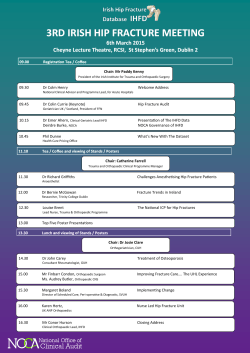
pdf - Orthopaedic Trauma Association
ALWAYS MAINTAIN A HIGH INDEX OF SUSPICION! COMPARTMENT SYNDROME: A Limb-Threatening Emergency Who Gets It? Extremity Fractures: Open or Closed Direct Blow to Extremity Crush Mechanism Patients on Anticoagulation Reperfusion Injuries Tight Bandages/Dressings Burns Warning Signs/Symptoms Radial Nerve Ulnar Nerve Significant Swelling Pain Increasing Pain Medication Needs Pain Out-of-Proportion to Injury Pain with Movement of Fingers/Toes Numbness/Tingling Nerves within Compartments (Figure 1&2) Motor Weakness Cooler Temperature of Extremity Beware of any Change in Exam Common Associated Injuries Tibia Shaft Fractures Fractures about the Knee Both Bone Forearm Fractures Floating Knee/Elbow Males < 30 Years Old with Forearm & Tibia Fractures Most Common Median Nerve Figure 1 – Forearm Lateral Sural Cutaenous Nerve Superficial Peroneal Nerve What Should I Do? Call your Orthopaedic Surgeon IMMEDIATELY– Emergent Operative Intervention Required Loosen Circumferential Dressing Slight Elevation Hydration Avoid Hypotension Supplemental Oxygen Sural Nerve Deep Peroneal Nerve Figure 2 – Anterior Leg The Orthopaedic Trauma Association presents this information as an educational service to the medical community. While the information is about health care issues and orthopaedic surgery, it is not medical advice. Individuals seeking specific orthopaedic advice or assistance for conditions such as these should contact an orthopaedic trauma surgeon through the Find a Surgeon program at www.ota.org. ota.org/education/compartment-syndrome
© Copyright 2025




















